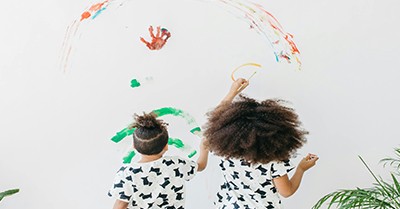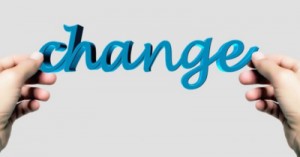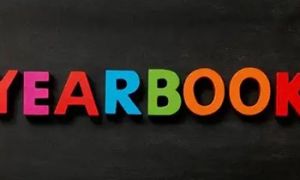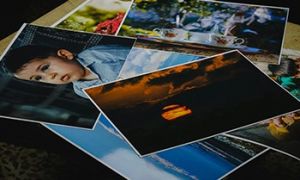In early childhood settings across the country, you can walk into a room and instantly tell what kind of art culture lives there. Sometimes you see walls lined with identical paper plate animals, each one carefully guided by an adult hand. Other times, you see a riot of colour, texture, and imagination — each piece unmistakably belonging to the child who created it.
The difference between these two environments is more than aesthetic. It speaks to the heart of our pedagogy, our image of the child, and our commitment to fostering creativity, agency, and authentic expression.
The Boy With the Balloon: A Metaphor for Creativity
In the story, a young boy stands holding a bright red balloon — a symbol of his imagination, his ideas, and his unique way of seeing the world. He enters a classroom excited to create, only to be told exactly what to draw, what colours to use, and where each line should go.
Slowly, the balloon begins to deflate.
Not because he lacks ability.
Not because he lacks interest.
But because the space around him leaves no room for his thinking.
This story mirrors what happens when children are given templates, pre-cut shapes, and step‑by‑step craft instructions that lead to identical outcomes. Their creative “balloon”—their sense of agency, curiosity, and confidence—quietly shrinks.
Why Identical Art Undermines Learning
When every child’s artwork looks the same, it sends subtle but powerful messages:
-
There is a “right” way to create.
Children learn to follow instructions rather than explore possibilities. -
Your ideas matter less than the adult’s plan.
This undermines autonomy and self‑expression. -
Mistakes are not welcome.
Children become hesitant, cautious, and less willing to take creative risks. -
Art is about product, not process.
This contradicts everything we know about how young children learn.
Open‑ended art, on the other hand, nurtures:
- divergent thinking
- problem‑solving
- sensory exploration
- emotional expression
- confidence and agency
- genuine joy in learning
These are not “extras” — they are foundational to early childhood development.
Art as a Mirror of the Child
Children’s art should be as diverse as the children themselves.
One child may swirl colours together to see what happens.
Another may draw their family with enormous heads and tiny legs.
Another may fill the page with dots because they love the rhythm of tapping the brush.
Each piece tells a story.
Each piece reveals thinking.
Each piece is a window into the child’s inner world.
When we replace this with identical crafts, we unintentionally replace the child’s voice with our own.
Shifting Practice: From Product to Possibility
Supporting change in art practice doesn’t require abandoning structure — it requires reimagining our role.
Instead of:
“Today we are all making the same butterfly.”
Try:
“Today we are exploring symmetry, colour, and shape. What might you create?”
Instead of:
“Glue this here, put this there.”
Try:
“What materials do you want to use? How will you attach them? What’s your plan?”
Instead of:
“That’s not how it’s supposed to look.”
Try:
“Tell me about your artwork.”
These small shifts protect the balloon—the child’s creativity—from deflating.
Connecting Open‑ended Art to EYLF Outcomes, Principles, and Practices
EYLF Principles
1. Secure, respectful and reciprocal relationships
Open‑ended art honours children’s ideas, strengthening trust and connection.
2. Partnerships with families
Sharing the purpose behind open‑ended art builds understanding and collaboration.
3. High expectations and equity
When every child’s artwork is unique, we communicate that every child’s voice matters.
4. Respect for diversity
Open-ended art allows cultural, personal, and creative diversity to flourish.
5. Ongoing learning and reflective practice
Reflecting on art experiences helps educators refine their pedagogy and challenge assumptions.
EYLF Practices
Holistic approaches
Art supports emotional, cognitive, physical, and social development simultaneously.
Responsiveness to children
Children’s interests, ideas, and questions shape the direction of the art experience.
Learning through play
Open‑ended art is a form of play—exploratory, joyful, and imaginative.
Intentional teaching
Educators intentionally provide rich materials and provocations without dictating outcomes.
Learning environments
A well‑designed art space invites experimentation, risk‑taking, and creativity.
Cultural responsiveness
Children express identity, culture, and belonging through their own artistic choices.
Continuity of learning and transitions
Children build confidence as creators when their ideas are consistently valued.
EYLF Learning Outcomes
Outcome 1: Children have a strong sense of identity
- They express themselves freely through art.
- They develop confidence in their ideas and abilities.
- They see their individuality reflected in their creations.
Outcome 2: Children are connected with and contribute to their world
- They explore cultural materials, symbols, and stories through art.
- They collaborate, share materials, and learn from one another.
Outcome 3: Children have a strong sense of well-being.
- Art supports emotional expression and self‑regulation.
- Children experience joy, pride, and satisfaction in creating.
Outcome 4: Children are confident and involved learners
- They experiment, problem-solve, and take creative risks.
- They engage in sustained thinking and exploration.
- They develop dispositions such as curiosity, persistence, and imagination.
Outcome 5: Children are effective communicators
- Art becomes a language for expressing ideas, feelings, and stories.
- They use symbols, marks, and representations to communicate meaning.
We are not just supervising art activities.
We are shaping how children see themselves as thinkers, creators, and contributors.
When we allow children’s art to look the same, we unintentionally teach conformity.
When we allow it to look different, we teach courage.
The boy with the balloon reminds us that every child arrives with ideas ready to soar.
Our role is not to hold the string tightly but to let it rise.
Ask yourself:
- Do the artworks in my room reflect me or the children?
- Am I protecting creativity or unintentionally limiting it?
- How can I create an environment where every child’s “balloon” stays full?
When we honour children’s individuality in art, we honour their humanity. And that is the foundation of truly meaningful early childhood education.
Further Reading
Linking Art To The EYLF Learning Outcomes
Benefits Of Art and Craft
Process Art Vs Product Art In Early Childhood Services
50 Process Art Activities
Benefits Of Creative Arts For Children In Early Childhood Services
Art and Craft Descriptions With Links To The EYLF
Importance of Displaying Children's Artwork
EYLF Curriculum Planning For Creative Arts







 As an Educator in Australia, your pay rate falls under the Children’s Services Award 2010. This award states the minimum amount that an employer can
As an Educator in Australia, your pay rate falls under the Children’s Services Award 2010. This award states the minimum amount that an employer can When working as a qualified Early Childhood Teacher (with a university degree) within a service, your rate of pay will come from the Educational Services
When working as a qualified Early Childhood Teacher (with a university degree) within a service, your rate of pay will come from the Educational Services When working as a Diploma Qualified Educator your pay rate is from the Children's Services Award 2010. This Award states your minimum rate of pay
When working as a Diploma Qualified Educator your pay rate is from the Children's Services Award 2010. This Award states your minimum rate of pay When working as a Cert 3 Qualified Educator, your pay rate is from the Children's Services Award 2010. This Award states your minimum rate of
When working as a Cert 3 Qualified Educator, your pay rate is from the Children's Services Award 2010. This Award states your minimum rate of Educational Leaders play a crucial role in their early childhood service by ensuring that the educational program aligns with best practices and supports the holistic
Educational Leaders play a crucial role in their early childhood service by ensuring that the educational program aligns with best practices and supports the holistic In early childhood education and care, ratios are more than a technicality—they are a frontline safeguard. Every child deserves responsive supervision, emotional connection, and developmental
In early childhood education and care, ratios are more than a technicality—they are a frontline safeguard. Every child deserves responsive supervision, emotional connection, and developmental Here’s a comprehensive Mobile Phone and Smart Watch Policy tailored for early childhood education and care (ECEC) services in Australia, aligned with the latest 2025
Here’s a comprehensive Mobile Phone and Smart Watch Policy tailored for early childhood education and care (ECEC) services in Australia, aligned with the latest 2025 With the new national child safety reforms kicking in on 1 September 2025, early childhood services like yours have a real opportunity to lead the
With the new national child safety reforms kicking in on 1 September 2025, early childhood services like yours have a real opportunity to lead the The Sea of Fish Challenge is a national initiative that invites children, educators, families, and communities to create and display fish artworks as a symbol
The Sea of Fish Challenge is a national initiative that invites children, educators, families, and communities to create and display fish artworks as a symbol Across the early childhood education and care sector, educators are sounding the alarm: current staffing ratios are insufficient to deliver safe, meaningful, and developmentally appropriate
Across the early childhood education and care sector, educators are sounding the alarm: current staffing ratios are insufficient to deliver safe, meaningful, and developmentally appropriate


